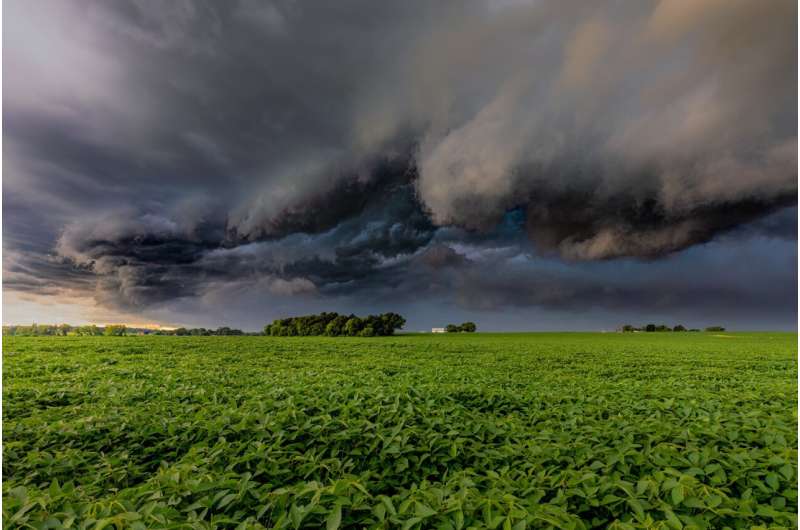This article has been reviewed according to Science X's editorial process and policies. Editors have highlighted the following attributes while ensuring the content's credibility:
fact-checked
trusted source
proofread
Researchers say early warnings could prevent thunderstorm asthma events

Melbourne lays claim to the unwanted title of being the epicenter of epidemic thunderstorm asthma (ETSA) worldwide, having experienced seven of the 26 recorded events.
The most disastrous of those occurred in November 2016, when hospital emergency departments were overrun with more than 10,000 people needing treatment for acute asthma and respiratory distress, and first responders were also totally overwhelmed.
With an unusually warm but wet spring, and an anticipated hot but unsettled summer predicted, Deakin researchers got on the front foot and analyzed the 2016 data in detail. Their recommendations on how to avoid a repeat of those tragic outcomes have been presented in the article "The perfect storm: temporal analysis of air during the world's most deadly ETSA in Melbourne" published in Therapeutic Advances in Respiratory Disease.
Associate Professor Cenk Suphioglu, head of Deakin AirWATCH, said the first step is an urgent review of how pollen levels are monitored.
"Our researchers took the data from the 2016 ETSA and, using a three-hourly time-resolved temporal, immediately noted that the standard 24-hour data must be improved to include 'real-time' pollen counts, preferably in 10-minute increments, so the public can be updated and warned throughout this type of weather."
The study involved analysis of atmospheric sampling of the air for pollen and fungal spores, and intact and ruptured pollen compared with different weather parameters, pollution levels and clinical asthma presentations.
The data then underwent a three-hour analysis, to better reflect the "before," "during" and "after" ETSA time points, on the days leading up to and following the Melbourne 2016 event.
"The storm outflow in 2016 only lasted around 12 minutes but sadly, 10 people lost their lives," said Associate Professor Suphioglu. "After this event there was a heightened awareness about the phenomena of thunderstorm asthma, but ultimately, that was too late for those who died."
Linear correlations were conducted with atmospheric pollution data provided by the Environment Protection Authority (EPA) of Victoria, weather data sourced from Bureau of Meteorology (BOM) and clinical asthma presentation data from the Victorian Agency for Health Information (VAHI) of Department of Health between November 21 and 22.
"We discovered that the counts of ruptured grass pollen grains increased 250% when the thunderstorm outflow reached Burwood," said Associate Professor Suphioglu. "The high ozone levels observed six hours prior to this ETSA event may be a critical early indicator of impending ETSA events, since high ozone levels have been linked to increasing pollen allergen content and reducing pollen integrity, which may in turn contribute to enhanced pollen rupture."
Monitoring ruptured pollen is key to determining if a thunderstorm asthma event will occur, and therefore, allow authorities to provide crucial community information.
"Common symptoms of thunderstorm asthma are wheezing, shortness in breath, chest tightness and persistent coughing," said Associate Professor Suphioglu. "Therefore, if you wheeze and sneeze during grass pollen seasons, you are an ideal candidate and at a potentially life-threatening risk for thunderstorm asthma."
An asthma assessment and, if necessary, the implementation of an Asthma Action Plan is vital for the safe and effective management of thunderstorm asthma symptoms.
"The conditions faced on this fateful day highlight the importance of better understanding this phenomenon, expanding the focus of current pollen monitoring, and optimizing ETSA forecasting to predict future events, protect at-risk patients and ultimately, save lives," said Associate Professor Cenk Suphioglu.
More information: Dwan Price et al, The perfect storm: temporal analysis of air during the world's most deadly epidemic thunderstorm asthma (ETSA) event in Melbourne, Therapeutic Advances in Respiratory Disease (2023). DOI: 10.1177/17534666231186726

















